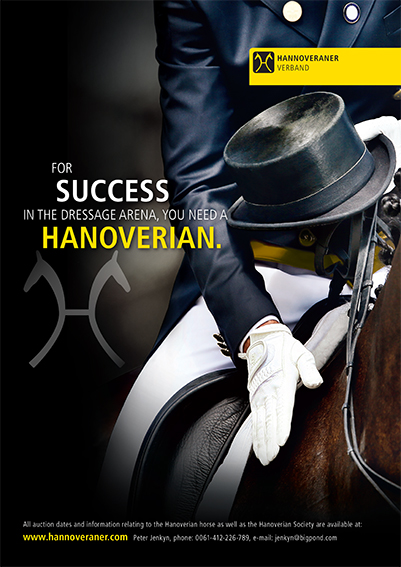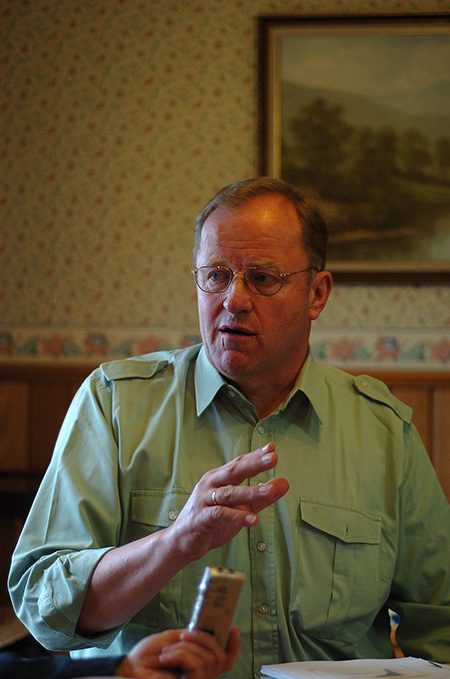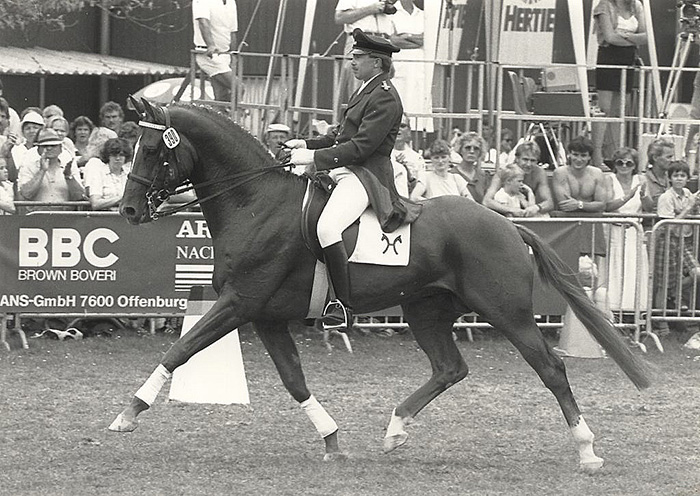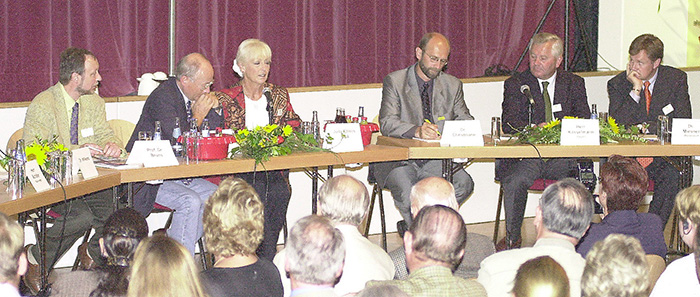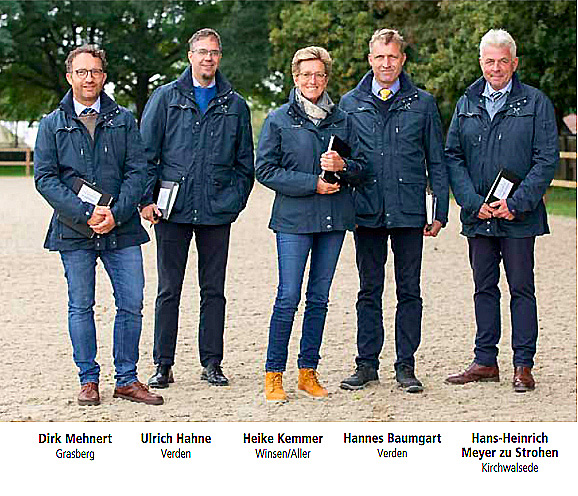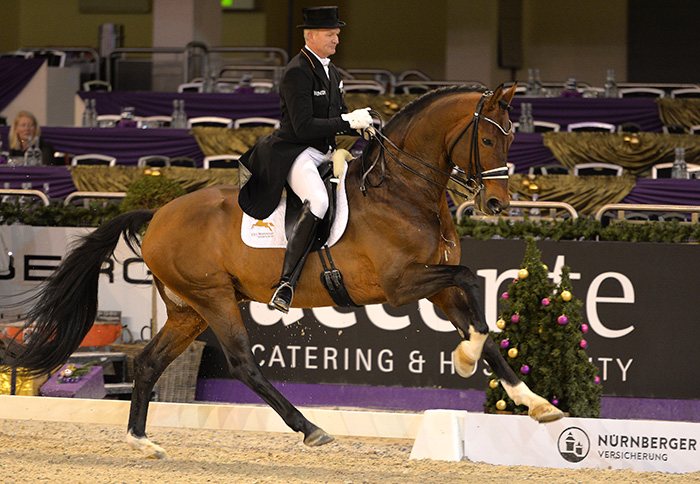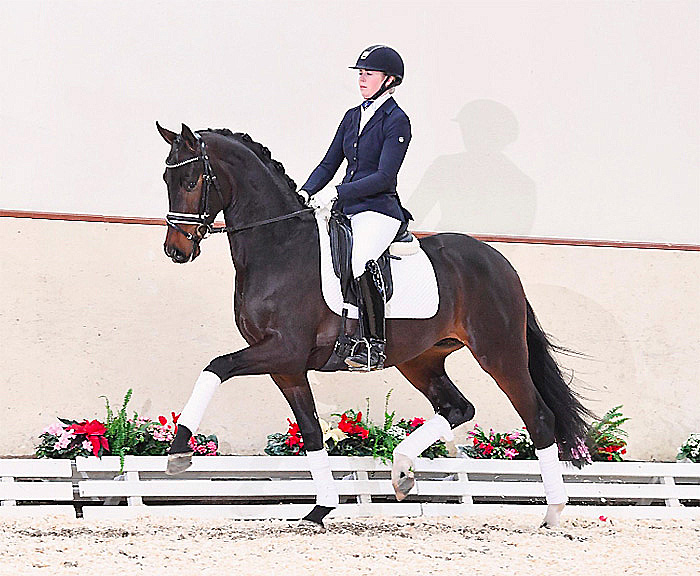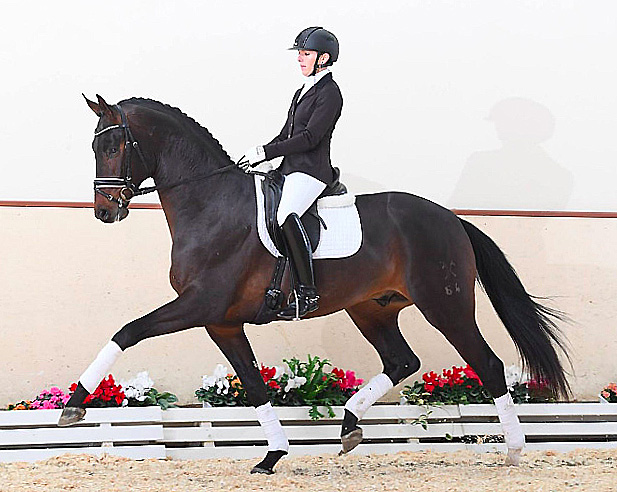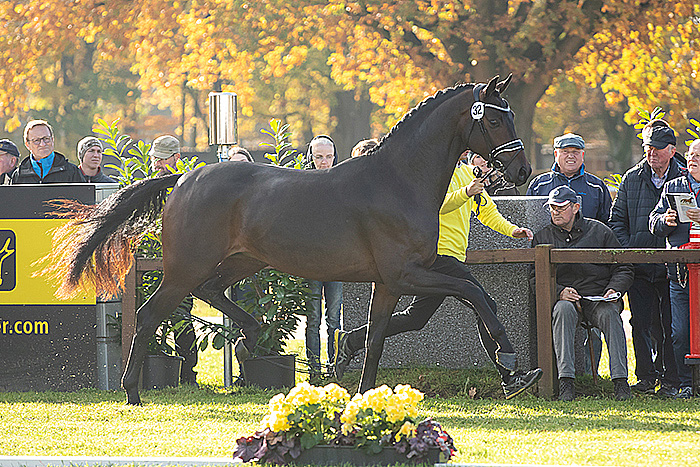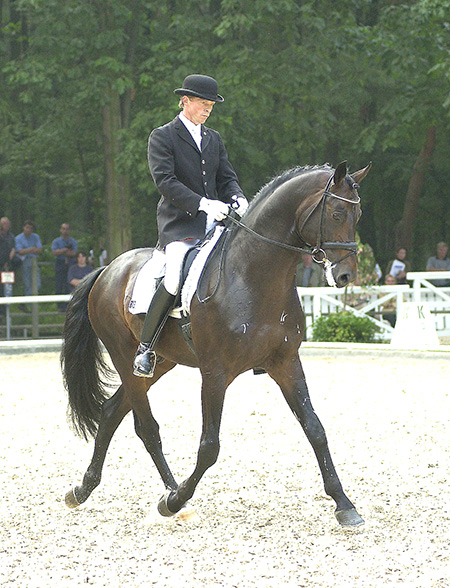Christopher Hector looks at the changing shape and rôle of the Hanoverian…
When I traveled to the Hanoverian breeding district for the first time, back in the mid 1980s, the breeders were still worshipping at the shrine of the ‘all round horse’ – or at least that was the theory.
Indeed right from the start, it was the breeding goal. When the Hannoveraner Studbook was founded in 1888 the breeding goal was a “medium-sized carriage horse, a strong riding horse and a horse suitable for the troops, especially as a cuirassier horse and an artillery-pole horse.”
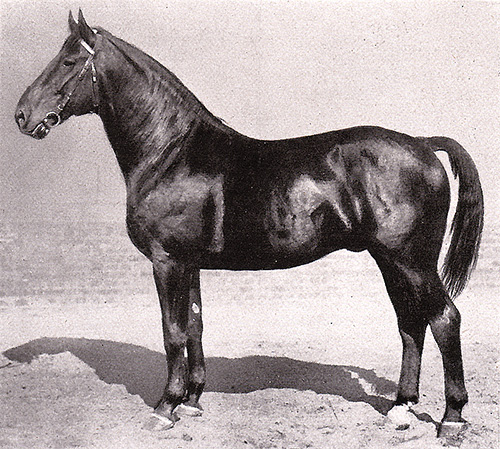
Journalist who stood at the State Stud Celle from 1927 to 1945
The look of the breed changed as need demanded. Towards the end of the nineteenth century when the main market was the cavalry, more Thoroughbred blood was used to produce a finer, riding type. After WWI, with the German cavalry disbanded, the market swung to agriculture, and the elephant model reigned supreme.
At the end of WW2, the future of the horse was in grave doubt, many mares were sent to the slaughterhouse – the number of Hanoverian mares fell from 30,000 in 1948 to 6,300 in 1963 – would the horse breeding industry survive? Then the canny administrator Gustav Rau came up with the idea of riding clubs to encourage the sons of the farmers to compete in horse sport and equestrian sport became the saviour of the German horse. Even then the writing was on the wall, the type would follow the rider demand, and as horse sports became for specialised, so to, the breeding direction for the mare owners.
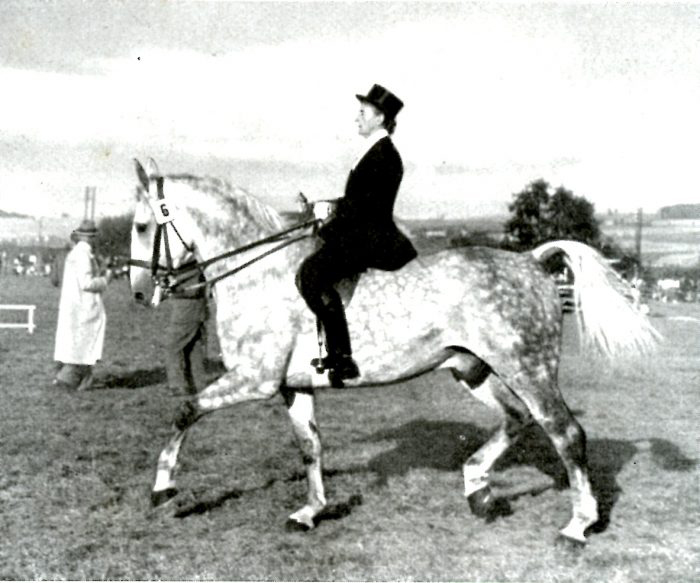
Here is one of those fine older style Hanoverians – the ten-year-old gelding, Alarich II ridden by Frau Thilde Kalteye. In 1948 Frau Kalteye was the Dressage Champion of female riders, and Alarich II was multiple times Champion in carriage horse classes and eventing classes. On top of that the gelding was ‘severely tested in all agricultural work’.
Back in 2000, the breeding director at the Verband was Dr Jochen Wilkens, who while not giving up entirely on the all-round mantra, obviously saw the way the wind was blowing, breeding in future was to be in the direction of “careful specialisation of an all round riding horse. The breeders are already specialising.”
It was a hot topic of discussion at a special Expo week seminar that year – The Modern Sporthorse. There the then deputy breeding director, Dr Ludwig Christmann stressed the need to specialise. His paper was a study of the sires of mares invited to take part in the loose jumping and riding horse class at the Ratje-Niebuhr show, and he produced two quite different lists. The sires of the jumpers were Acord II, Calido, Contender, Continue, Crazy Classic, Dinard L, Escudo I & II, Laptop, Linaro, Metternich, Raphael, Silvio, Spartan and Zacharias. For the riding horse class: Brentano II, Cordoba, Davignon, De Niro, Fabriano, Hohenstein, Longchamp, Prince Thatch xx, Regazzoni, Weltmeyer, White Magic and Wolkenstein II.
Weltmeyer – he dominated dressage breeding in the 80’s and 90’s
And the type in both groups was very different, bearing out Ludwig’s research that found that good marks for every single one of the conformation ratings on the Hanoverian evaluation sheet, even saddle position, had a negative, yes negative, relation to jumping ability. In other words, what was accepted as ‘good’ conformation was ‘bad’ conformation for jumpers…
On the left, Professor Bruns, Ludwig Christmann busy taking notes in the centre, and Ulli Kasselmann on his left…
Another speaker, Professor Eric Bruns advocated breeding the ‘all-rounder’ for the general leisure horse market – and argument that was strongly resisted by Ulli Kasselmann· (who really knows which way the wind is blowing in the marketing of dressage horses) – Ulli argued that the breeder must aim for high performance. “I don’t like the concept of an all-rounder, it is a marketing gimmick.”
This in turn produced a strong counter argument from Dr Lehmann, a previous director of the Westphalian Verband, who finished an impassioned speech with the warning: “All the stallions that do not want to jump, should be excluded or they will ruin the good mares we have.”
By 2021, for the first time, there was not one, but two Hanoverian licensings, one for dressage, one for jumping. The dressage commission included three top dressage rider / trainer / competitors – Heike Kemmer, Hannes Baumgart (these two are also serious breeders) and Hans Heinrich Meyer zu Strohen. But while Ludwig Christmann supports the separation he points out that the licensing commissions are not totally separate:
“The five person commissions are not totally separate. Uli Hahne, the Hannoverian breeding director is on both commissions. So there is still a link between the disciplines. But in general I feel this is a step into the right direction. We have to breed the horse the sport wants, and therefore we have to include riders and trainers into our selection decisions.”
Back to 1990, when for the first time the breeding aim mentioned a focus on dressage, show jumping or eventing, and this is still reflected in the current breeding aim:
“4.1 The Hanoverian is to be bred as a horse which is particularly suitable for riding. The aim is to produce horses which, on account of their inner qualities, rideability, external appearance, sequence of movement, natural jumping ability and health, are suitable as performance as well as leisure horses.
4.2 On this basis it is aimed to breed horses with particular ability for the discipline either of dressage, jumping or eventing.
4.3 With the qualities mentioned in paragraph 1, it is also aimed to breed horses which are suitable for driving sport.”
The move to specialisation has seen huge changes in the performance tests over the years. Up until 1975 harness was included in the stallion performance test, including dragging a heavy sled.
In 2016 the cross country sector of the performance test was abolished, while at the same time the length of the test has been progressively reduced from 100 days (eleven months for the stallions owned by Celle) to 30 days, with much easier access on the basis of sport results.
Back to 2021, so how did the bloodlines shape up at the first ever dressage licensing?
Escolar
One of the most influential lines was the newly revived E line through Escolar. This line originated in Hanover with Adeptus xx, but migrated across the border and was refined by the Westphalian breeders – particularly the Borgmann family who bred Escolar’s sire, Estobar.
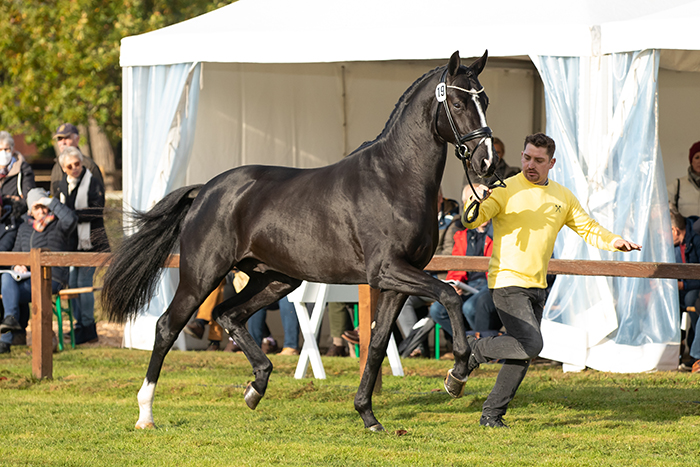
What a colt! Escamillo / De Niro (photo credit – Hannoveraner Verband)
There were five colts by Escolar, and five by his son Escamillo (out of a De Niro mare) The highest priced stallion was by Escamillo out of a De Niro / Prince Thatch xx mare, he sold to Holland for €700,000.
For Romance
But the line with the most representatives was the F line through Florestan with fourteen colts nominated. Hanoverian stallion of the year, Fidertanz (Fidermark / Ravallo) sired two, For Romance (Fürst Romance / Sir Donnerhall) produced four. The F group contained one of the Dutch fusion representatives, Fürst Toto (Fürstenball / Totilas).
Fürst Toto
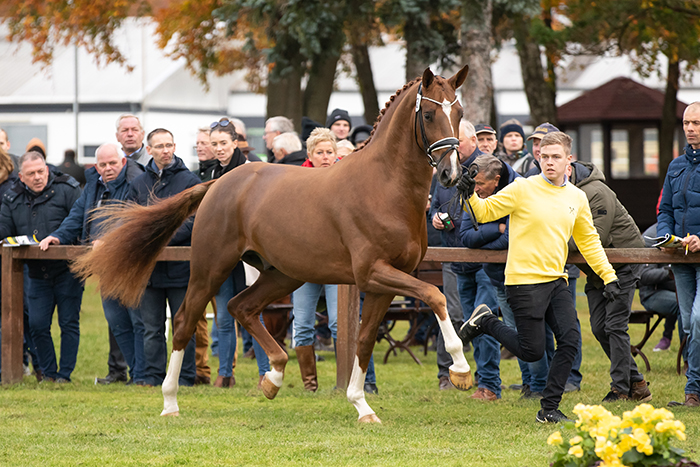
This dressage licensing also included this son of Totilas out of a Danciano mare
(photo credit – Hannoveraner Verband)
Premium colt For Dance / Agostini, off to Warendorf State Stud
(photo credit – Hannoveraner Verband)
The D line remains influential with seven in the lineup. New sire at Celle, Da Costa had three. This stallion is interestingly bred, by the successful Donnerhall grandson, Dimaggio but out of a Holsteiner mare, Pamela, who is by Coriander, who is a grandson of Calypso II (Cor de la Bryère/Heissporn), who was the first Holstein stallion accepted at the State Stud Celle. Pamela is out of a mare by the Thoroughbred, Amigo. Da Costa was fourth at the Bundeschampionate, and currently competes at Prix St Georges level.
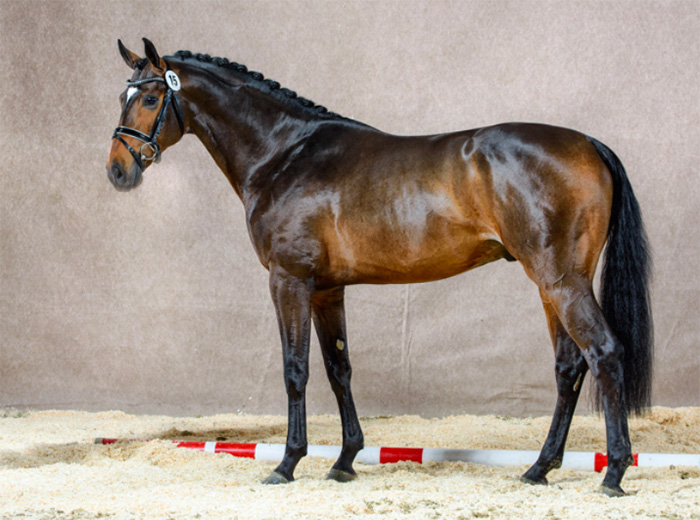
Da Costa
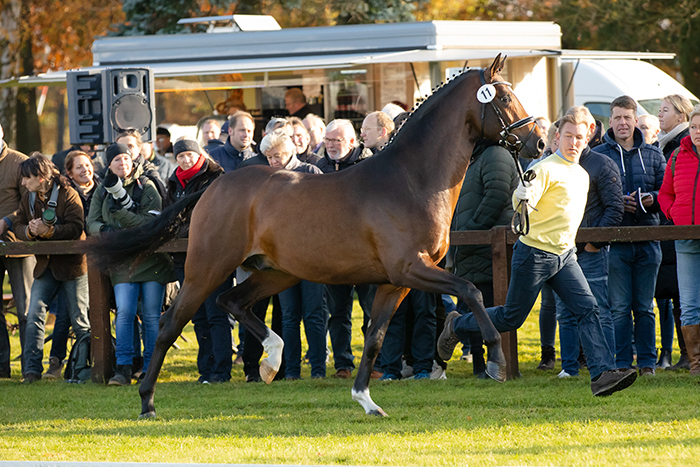
Da Costa / Sandro Hit colt (photo credit – Hannoveraner Verband)
Don K (Don Nobless / Sir Donnerhall) sired one, as did his sire, Don Nobless who has two crosses of the great Donnerhall, being by Dancier out of a Don Davidoff mare.
It would not be a licensing without some Millennium (Easy Game / Ravel) presence, and sure enough he has two, including one out of a Jazz mare, while his son Mykonos (out of a Desperados mare) also has two.
One for the ‘R’ Line from Rubin-Royal
The R line is just hanging in there with three representatives, one by Rubin-Royal (Rhodiamant / Grundstein II) and two by Springbank II by Skovens Raphael – a great grandson of Rhodiamant – out of a De Niro mare.
In most German studbooks, identifying stallion lines is made much easier because of the requirement that the foal’s name begins with the initial letter of the sire. The exception to this rule is the Trakehner book where the first letter is the first letter of the dam’s name. There are the occasional exceptions, like the Oldenberger, Weihegold, who is by Don Schufro, but her name salutes the Weissena dam line.
But once we leave Germany, it becomes more complicated – the Dutch confuse things when their stallions are named with the letter of their birth year rather than their sire’s initial. Then when the horses travel north to Denmark, they find there is no rule for naming, although most breeders follow the German tradition, but there are no restrictions from the studbook as to the first letter. There is, however, a limit to the length of the name. Many Danish breeders use their stud name or farm name as a prefix or a suffix, eg. ERA Dancing Hit or Mistral Højris.
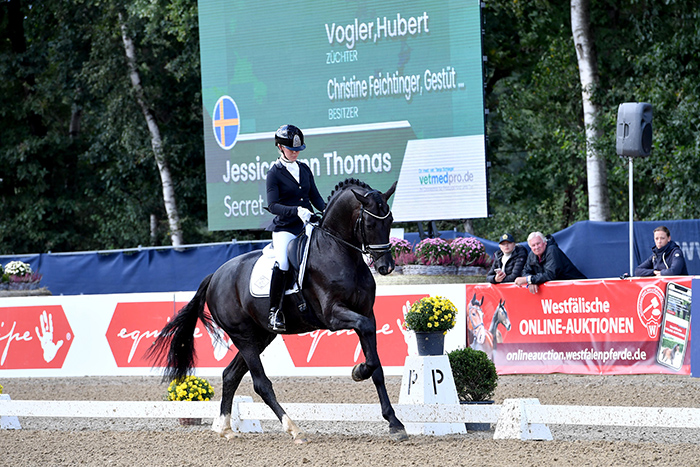
Secret
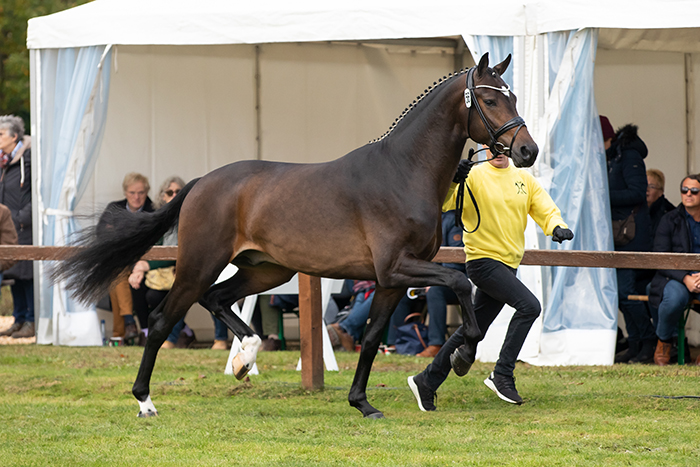
and his son, out of a Sandro Hit mare (photo credit – Hannoveraner Verband)
So at the 2021 Hanoverian licensing, we have the Baden Wurttemberger licensed stallion Secret by Sezuan, who was bred in Denmark by the Dutch bred Danish based Zack. Secret, out of a St Moritz mare, is the sire of five colts, while Sezuan sired one. Does this mean we have another S line to join the Sandro Hit version? Not really – Zack is by Rousseau by Ferro by Ulft. Like they say, go figure…
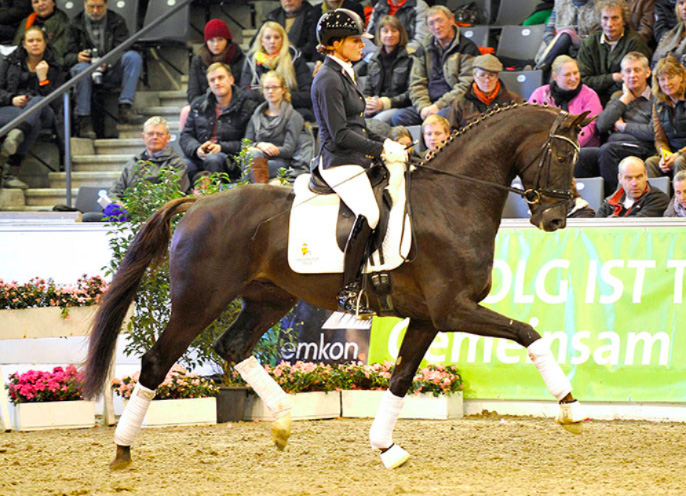
Livaldon
There is an interesting blend of Dutch blood at the Licensing. Livaldon – a Dutch / German fusion, by Vivaldi out of a Donnerhall mare, has two colts and his son, La Vie, out of a Scolari / Wolkenstein II mare, one. Asgard’s Ibiza who is flavor of the month in some circles in Germany, is by the Vivaldi son, Desperado N.O.P. He is out of a Jazz / Contango mare. but his third line is more or less a history of Dutch dressage breeding: Krack C, Havidoff, Cocktail, Contango, along with the famous mares, Renate-Utopia, Charmante and Wendy. He is represented by an exquisite black colt out of a For Romance / Fidertanz / De Niro mare.
Now take a trip in time back to 2000 and that collection of stallions that Ludwig identified twenty years ago. One star, Brentano II, and one superstar, De Niro, while the rest have largely faded, although there was a cheer from the breeders at the latest 2021 Verden licensing auction when the auctioneer announced that the first premium stallion to go under the hammer was a brown by Bon Coeur/Carabas from – I’m now quoting the Hanoverian press release – ‘the line of the stallion of the century, Weltmeyer, for 300,000 Euros.’
The 2021 jumping licensing showed that the influential lines are less volatile, from LudwIg’s collection in 2000, a number remain prominent – Acord II, Calido, Cotender, Continue, Silvio and Spartan through his son, Stakkato.
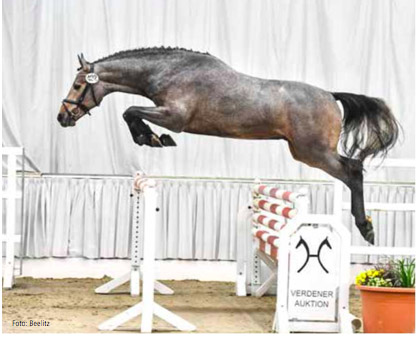
Premium jumping colt by Checkter (photo credit – Hannoveraner Verband)
The premium stallion at the Jumping licensing by Checkter/Stolzenberg (breeder: Jasmin Leymann, Bassum, exhibitor: Böckmann Pferde GmbH, Lastrup), whose dam is a half sister to Eric Lamaze’s world class horse Fine Lady, was auctioned off to a regular customer from the U.S. for 130,000 Euros. Whereas once it looked as if the old Hanoverian jumping lines were going to disappear, either absorbed into the dressage breeding population, or swamped by the blood from Holstein, the highest priced colt carries that older Hanoverian jumping blood, specifically the Norm mare line which has been at the Habermann farm for 100 years this year, through his sire, Checkter (Celestial / Lord Pezi). The colt’s dam Solina is by Stolzenberg, a grandson of Spartan. Solina is out of Dorina, the 2018 Hanoveraner Mare of the Year, she is by Drosselklang II by Don Carlos, another Hanoverian jumping stalwart and out of the Grannus mare, Golden Lady, again digging into the pedigree is to reveal a time when the Hanoverian breeders were want to boost of the jumping ability of their stock, rather than their ability to point a toe or trot on the spot.
But will there be even more specialisation down the road? Ludwig Christmann in a recent article, How Does the KWPN dressage horse compare with the German horse? points to yet another degree of specialisation within the dressage discipline…
What Ludwig suggests is that the Dutch select horses that are more likely to perform the Grand Prix movements, even if they are less pleasant to ride as young horses and lack the natural movement of the German horses.
“From my impressions at mare performance tests, I can confirm that offspring of Dutch stallions are more often endowed with less swinging trot movements than the Hannoveraner or Rhineland mares. The canter often is the best gait, the walk the weaker gait.”
But this might not be a disadvantage –
“Just sufficient movement with less swing can be advantageous for the collection. A pre-disposition for Grand Prix does not require very big movement; the rideability of a Grand Prix-talent does not have to be easy. There are enough examples of successful Grand Prix horses, including Hannoveraner, that were difficult and required great riding skills.”
In the future could we see two streams of dressage horse – one aimed directly at Grand Prix, and the other for the vast majority of competitors who never attain that lofty goal? Or do even the weekend pleasure riders share a belief that one day they too will compete Grand Prix…
